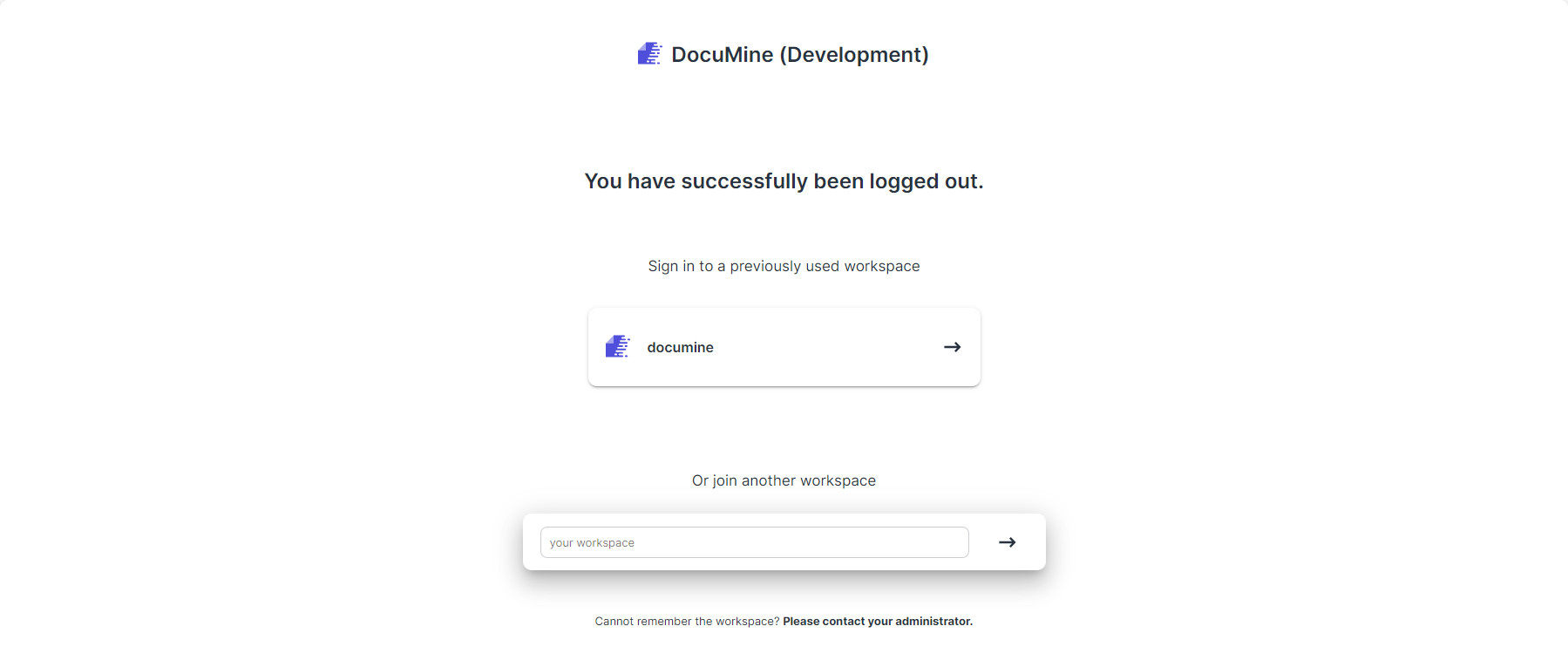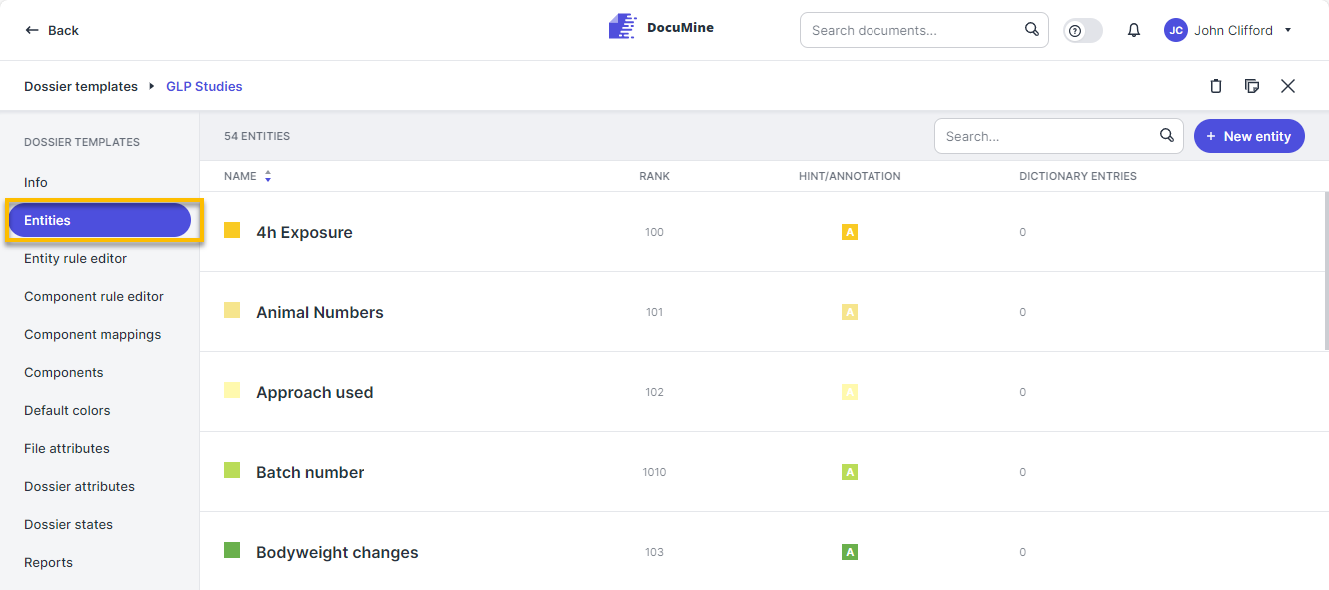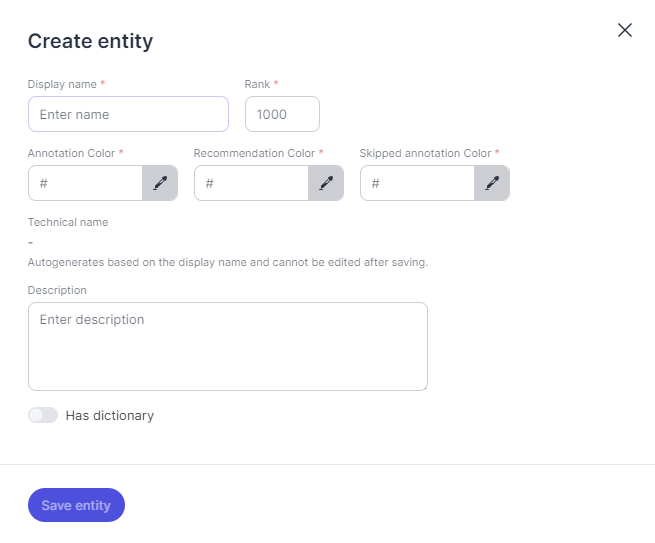Create entity in DocuMine settings
To make your rules work, you need to create an entity in the DocuMine settings first. Here is how:
Login
Sign in to DocuMine:
Open your browser and enter the DocuMine URL.
You must join a workspace when you log in for the first time. Enter the workspace you received from your admin.
On all subsequent logins, select from the previously used workspaces or join a new workspace. Organizations can have more than one workspace.

Workspace selection
Enter your username or e-mail and your password, and click Sign-In.
For information on how to activate your account, please see Account activation.
Good to know:
You need the admin role to be able to create entities and access the rule editors.
You also need the manager role in order to use the layout grid on your documents and test the functionality of your rules.
Settings
Access the Settings section.

Settings
That opens the dossier template list.
What is a dossier template?
You need the admin role to be able to create entities and access the rule editors.
Users can configure different ruleset. The applied template determines the outcome of the extraction.
Dossier template and entities
Select the dossier template from the list where you plan to define the new rules.
Go to Entities. This section lists the entities that have already been created.

Entities
Click New entity in the upper right to create a new entity.
The "Create entity" dialog opens.
Entity creation dialog

"Create entity" dialog
Complete the "Create entity" dialog and save it to create a new entity in DocuMine.
Mandatory fields are marked with a blue asterisk in the UI.
Technical name/Display name | The technical name is generated automatically from the display name you enter. It is the name you use for entity rule creation in the rule editors. Special characters are removed automatically from the technical names, as they would otherwise lead to errors during analysis. |
Rank | Decide how to rank the new entity in the entity ranking. Each entity must have a unique ranking number. If an item is also extracted for an entity with a higher rank, that entity takes precedence. |
Annotation color | Define the highlighting color of the values extracted by DocuMine on the basis of this entity. Enter the hex code of the color or click the pencil button to select a color. The components will then be highlighted in the selected color in the editor. |
Recommendation color | Define the color of recommendations generated on the basis of this entity. Enter the hex code of the color or click the pencil button to select a color. The recommendations will then be highlighted in the selected color in the editor. What is a recommendation?You can define in the rules that a component part shall only be recommended for extraction. The entity values will only be extracted once the users accept the recommendation. |
Skipped color | Define the color of skipped annotations generated by DocuMine on the basis of this entity. Enter the hex code of the color or click the pencil button to select a color. The skipped components will then be highlighted in the selected color in the editor. What is a skipped annotation?You can specify in the rules that certain entity values shall not be extracted under certain circumstances. However, DocuMine still highlights them as skipped to indicate that the information has been identified. |
Description | Enter a description. |
Has dictionary | Enable the toggle if you want the entity to have a dictionary. Not every entity needs a dictionary—that depends on the use case and rule configuration. Case-sensitive: Check this box if you want DocuMine to be case-sensitive when parsing documents based on the entity's dictionary. |